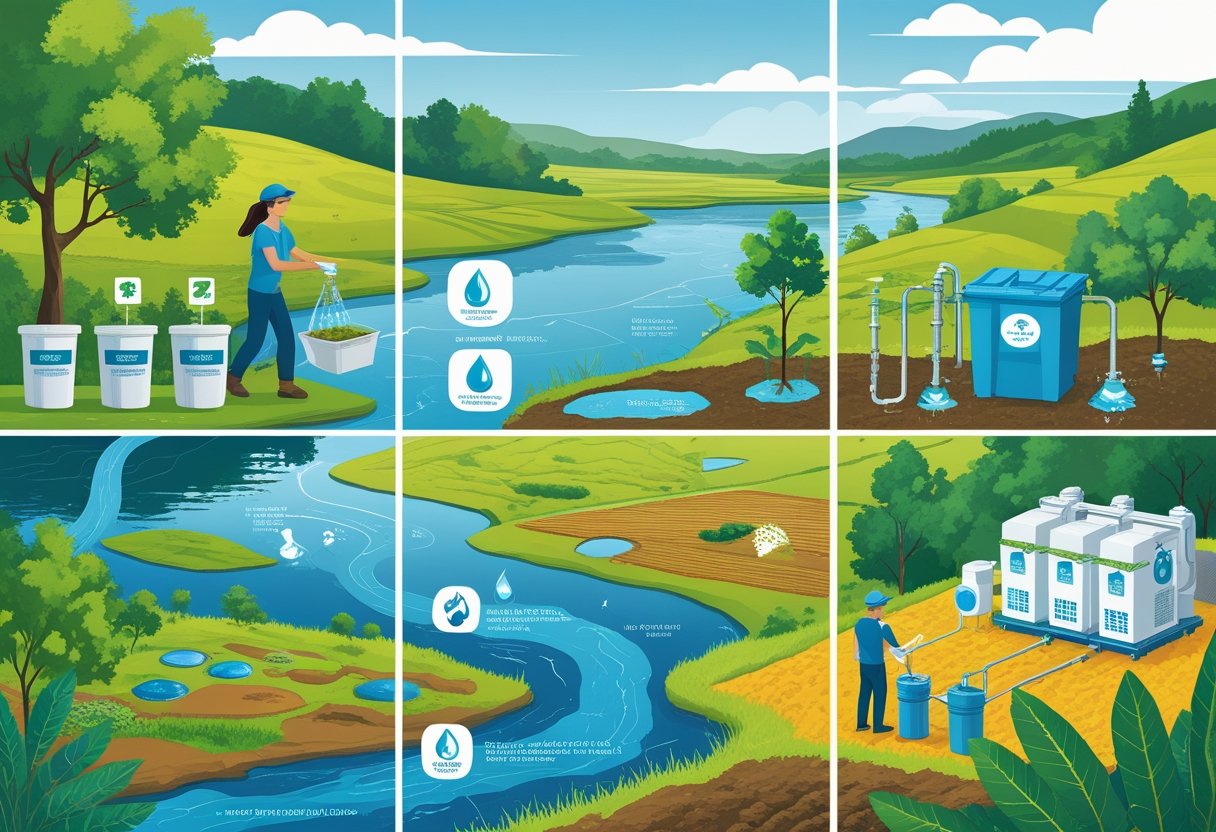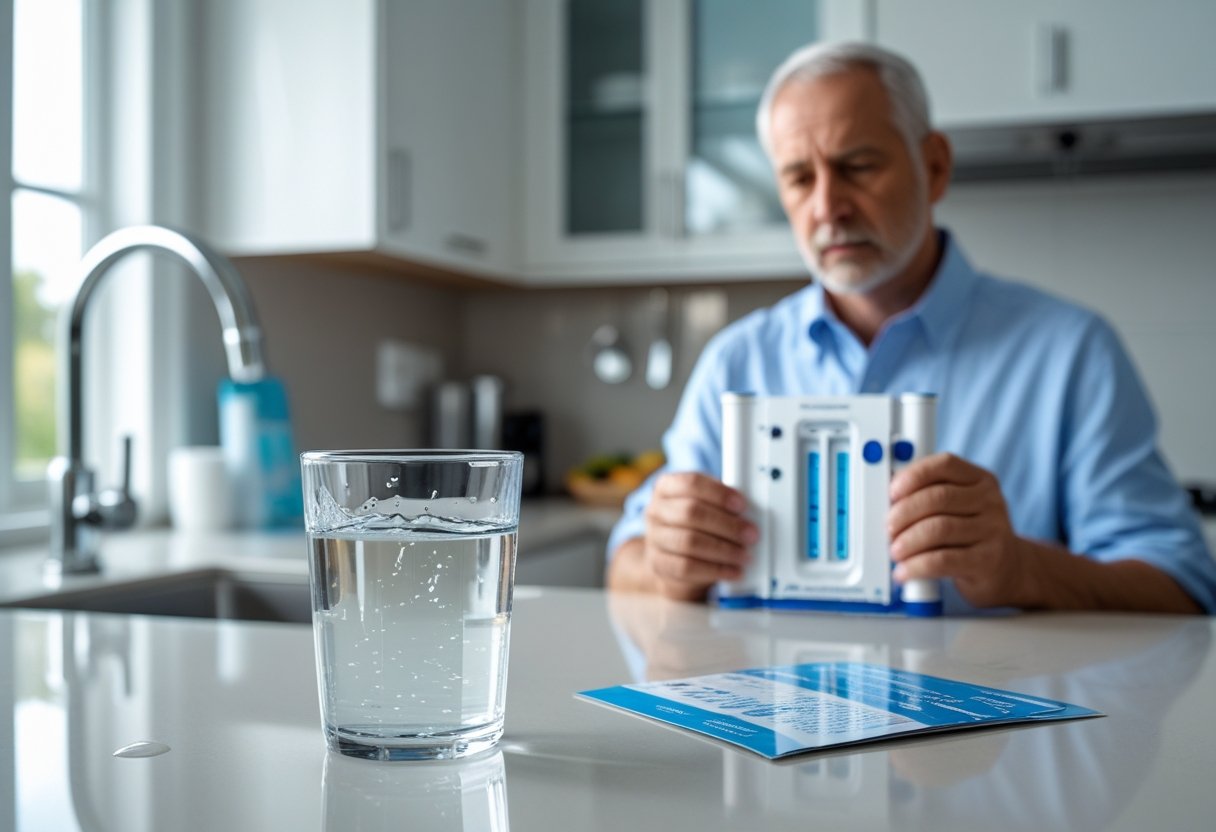Contaminated hose water can pose significant health risks, not just to your garden but also to your family's well-being. To prevent hose water contamination, you can install backflow preventers and maintain an air gap between the hose and any water source. These strategies ensure that harmful substances do not mix with your drinking water supply, protecting both your health and the environment.
By utilizing backflow preventers, you can safeguard your home from possible pollutants and ensure compliance with local regulations. Pacific Backflow has been serving San Diego County for nearly half a century, providing reliable backflow testing and installation services. With a commitment to protecting your water supply, you can trust experts to keep your system functioning effectively.
Furthermore, regularly inspecting and maintaining your hose and its connections is crucial. Small measures, like using inline filters and avoiding submerged hoses, can further reduce contamination risks. Making these adjustments not only enhances the safety of your water but also contributes to better gardening practices.
Understanding Hose Water Contamination
Hose water contamination poses a significant risk to your health. Awareness of the types of contaminants, their sources, and their health impacts is essential for protecting yourself and your family.
Risks of Contaminated Water From Garden Hoses
Contaminated water from garden hoses can introduce harmful substances into your drinking supply. When the pressure in the water system drops, contaminated water can backflow into clean water lines. This creates a risk of exposure to bacteria, chemicals, and other pollutants. Backflow incidents can occur due to various reasons, including fire fighting or water main breaks.
Leaving hoses submerged in ponds, pet bowls, or buckets significantly increases this risk. The potential for contaminants to siphon back into your water system is substantial, underscoring the need for effective prevention measures.
Common Sources of Hose Water Contaminants
Hose water can become contaminated through multiple sources. Common contributors include pesticides, fertilizers, and bacteria.
- Chemical Leaching: Garden hoses made from low-quality materials may leach harmful substances such as phthalates and BPA.
- Environmental Factors: Outdoor faucets can collect dirt and insects. This contamination can lead to mold or harmful bacteria growth when hoses are left stagnant in the sun.
- Cross-Connections: Connecting hoses to devices like sprayers without backflow prevention can lead to the mixing of non-potable water with drinking water supply. For instance, watering a lawn with a hose attached to a chemical sprayer increases contamination risk.
Taking proper precautions, like using high-quality hoses designed for drinking water, is crucial for minimizing contamination.
Health Impacts of Exposure
Exposure to contaminated hose water can lead to serious health issues. Using water from a contaminated hose can introduce harmful bacteria into your system, resulting in gastrointestinal illnesses, skin irritations, or respiratory issues.
Chemicals such as pesticides and heavy metals can accumulate in your system, leading to long-term health risks such as cancer or developmental issues in children. A single instance of using contaminated water is unlikely to cause immediate harm, but repeated exposure compounds risks over time.
For reliable solutions to prevent backflow and contamination, consider services that specialize in maintaining water quality and protecting your supply. Pacific Backflow offers comprehensive testing and installation services to secure your water system.
Selecting Safe Garden Hoses and Attachments
When selecting garden hoses and attachments, it's crucial to prioritize safety against water contamination. This section discusses key factors that ensure your gardening practices remain safe and free from harmful chemicals or toxins.
Choosing Drinking Water Safe Hoses
Opt for hoses specifically labeled as drinking water safe. These are often made from materials like rubber or polyurethane that minimize the likelihood of leaching harmful substances. Avoid hoses containing BPA or phthalates, as these can compromise water quality. Always check for compliance with safety standards, such as those set by the FDA. Many reputable brands offer hoses that are both durable and non-toxic. Investing in a quality hose protects not only your garden but also your drinking water supply, especially when you’re using the water for edible plants.
Dangers of Toxic Materials and Fittings
Many standard garden hoses include fittings that are made from materials containing harmful chemicals. Lead is a common concern, often found in hose fittings and nozzles. This can leach into the water supply, posing health risks. Even hoses marked as "recreational" can contain toxic substances. Always consider fittings made from nickel- or chrome-coated brass which are safer. Checking the labeling is essential here; make sure your hose and attachments mention lead-free materials. Remember that the safety of your water supply can be compromised by these components.
Best Practices for Hose Attachments
Utilizing safe hose attachments contributes significantly to keeping your water supply uncontaminated. When connecting hoses, choose attachments labeled as BPA-free and made from materials designed for potable water. Periodically inspect your attachments and hoses for wear and tear, as deterioration can lead to leaks and contamination. Ensure that any sprayers, nozzles, or connectors you use are compliant with water safety standards. For those unsure, consulting experts like Pacific Backflow can provide you with guidance tailored to your specific gardening needs. By following these best practices, you maximize the safety and efficiency of your watering routine.
Preventing Chemical and Bacterial Contamination
Maintaining the integrity of your hose water is essential for safe usage. Proper hose storage, regular cleaning, and effective measures to prevent algae and bacterial growth will significantly reduce the risk of contamination in your garden hose.
Proper Hose Storage and Maintenance
To avoid contamination, it's crucial to store your hoses correctly. Always keep them in a cool, dry place, away from direct sunlight to prevent degradation. Coiling your hose neatly can avoid kinks and leaks, which could introduce dirt and bacteria.
Inspect your hoses regularly for any damage, such as cracks or holes, and replace them when necessary. Ensure you use separate hoses for drinking water and garden tasks to prevent cross-contamination. A reputable backflow service, like Pacific Backflow, can help you assess your systems for proper functionality.
Flushing and Cleaning Protocols
Flushing your garden hose before use is a vital step. Run water through the hose for a few minutes to clear any stagnant water that may have pooled. This simple act helps remove any harmful bacteria and contaminants.
In addition to flushing, establish a regular cleaning routine. Use a mixture of mild soap and water to clean the interior and exterior of the hose. Rinse thoroughly to ensure no soap residue remains. Periodic cleaning will minimize microbial growth and keep your water supply safe. If contaminants persist, consider reaching out to Pacific Backflow for professional guidance.
Preventing Algae and Bacterial Growth
Algae and bacteria thrive in warm, stagnant water. To deter their growth, store your hose away from sunlight and prevent any trapped water. Using lids or caps on hose ends when not in use can further cut off exposure to air and light.
Consider using a hose with antimicrobial properties to inhibit the growth of unwanted organisms. If you notice slimy buildup, clean it immediately with a vinegar solution or a specialized cleaner designed for hoses. Regular checks and maintenance can help you ensure your water remains uncontaminated and safe for use.
Ensuring Backflow Prevention and Cross-Connection Control
Maintaining water safety requires proper measures to prevent backflow and cross-connections. Effective strategies, such as using specialized devices, are essential for safeguarding your drinking water supply.
Installing Hose Bibb Vacuum Breakers (HBVB)
Install a Hose Bibb Vacuum Breaker (HBVB) on every external faucet. These devices are specifically designed to prevent backflow contamination by creating a physical barrier. They operate by allowing water to flow out but blocking any potential backflow into the system.
Key installation points:
- Ensure the HBVB is mounted above the hose bibb.
- Check that it is compliant with local plumbing codes.
By doing so, you will significantly reduce the risk of contaminants entering your water supply.
Using Backflow Protection Devices Safely
Regularly utilize backflow protection devices to ensure their effectiveness. Devices such as double-check valves are crucial in preventing backflow. Ensure they are properly maintained and regularly tested.
Safety tips include:
- Schedule annual testing to confirm device functionality.
- Replace any outdated or malfunctioning devices immediately.
Pacific Backflow offers reliable and responsive backflow testing services in San Diego County, ensuring your systems stay compliant and safe.
Avoiding Hose Immersion in Contaminated Water
Preventing hose immersion in contaminated water is critical. Hoses left submerged in buckets, pools, or other non-potable sources can easily allow contaminants to backflow into your water system.
Practical measures to adopt:
- Always keep hoses elevated when filling containers.
- Use hose reels or hangers to avoid contact with contaminated sources.
These practices help maintain the integrity of your drinking water supply and minimize cross-connection risks. By implementing these strategies, you play an active role in ensuring water safety for your home or business.
Safe Practices for Everyday Hose Use
Maintaining safety with garden hoses is crucial to ensure you do not inadvertently contaminate your drinking water supply. By implementing a few simple practices, you can effectively prevent potential hazards associated with hose use.
Creating an Air Gap When Filling Containers
When using a garden hose to fill containers, it’s essential to create an air gap. This prevents backflow, which can occur when water pressure fluctuates. By maintaining a distance between the end of the hose and the water level in the container, you eliminate the risk of contaminated water being siphoned back into your supply.
To achieve this, you can:
- Measure the Gap: Ensure there is at least one inch between the hose and the container.
- Use Fill Spouts: Opt for containers with built-in fill spouts that facilitate an air gap.
- Secure the Hose: Keep the hose in a fixed position to avoid accidental contact with contaminated surfaces.
Preventing Hose Water Scalding Hazards
Hoses exposed to sunlight can heat quickly, leading to scalding water. This poses a burn risk when the water is used for any purpose, especially if you’re watering plants or washing hands. To minimize this risk, consider the following methods:
- Prioritize Timing: Use hoses during cooler parts of the day, such as early mornings or late evenings.
- Insulate Your Hose: Use hose sleeves or wraps that can help shield the hose from direct sunlight.
- Test Water Temperature: Always run the water for a few moments before filling a container or using it for washing.
Routine Inspection and Replacement Guidelines
Routine inspections of your garden hose are vital to ensure it remains safe for use. Regular checks can prevent leaks and contamination that arise from worn or damaged hoses. Follow these guidelines:
- Inspect for Damage: Look for cracks, blisters, or kinks that may compromise the hose's integrity.
- Check Fittings and Connections: Ensure that fittings are tight and secure to prevent leaks.
- Replace as Needed: If your hose shows significant wear or damage, replace it to maintain safety standards.
Regular maintenance not only extends the life of your hose but also plays a critical role in protecting your drinking water supply. For expert assistance, turn to Pacific Backflow, which offers reliable backflow testing services.
Frequently Asked Questions
Hose water contamination is a significant concern, and understanding prevention methods is key. The following sections provide clear answers to common inquiries regarding garden hose safety and best practices.
What steps can be taken to ensure garden hoses do not leach chemicals into the water?
To prevent chemical leaching, use hoses explicitly labeled as drinking water safe. Avoid leaving hoses in direct sunlight, as UV rays can degrade the materials. Regularly inspect hoses for signs of wear or damage, and replace them when necessary.
How often should hoses be replaced to avoid contamination risks?
Inspect your hoses at least once a year. Replace hoses that show signs of degradation, such as cracks or discoloration. If you frequently use hoses for non-potable purposes, consider using dedicated hoses for drinking water only.
Are there specific materials in hoses that are safer for drinking water use?
Hoses made of vinyl or polyurethane are generally safer for drinking water use. Look for hoses that meet standards set by the NSF (National Sanitation Foundation) which ensure safety for potable water applications.
What are the best practices for cleaning and storing hoses to minimize bacterial growth?
After each use, empty the hose completely and store it in a cool, dry place. Clean hoses regularly with a vinegar-water solution to minimize bacterial growth. Avoid coiling hoses tightly, as this can lead to area stagnation and bacteria buildup.
Can the use of water filters at the tap prevent contamination from hoses?
Water filters installed at the tap can provide an extra layer of protection against potential contaminants from hoses. They can help remove any harmful substances that may enter the water supply, ensuring your drinking water remains safe.
What certifications should be looked for when purchasing a hose to ensure water safety?
When buying hoses, look for labels indicating compliance with NSF/ANSI 61, which confirms the hose is safe for drinking water. Also, check for other relevant certifications that demonstrate the product’s quality and safety standards.
For more comprehensive solutions and services regarding backflow prevention, consider consulting with professionals like Pacific Backflow, who have been serving San Diego County for nearly half a century.











